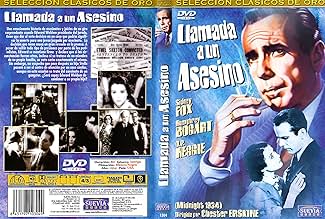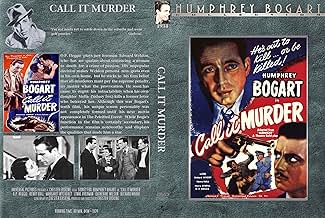El presidente del jurado hace preguntas que llevan a una mujer a la silla eléctrica por un asesinato cometido en el fragor de la pasión. La noche de la ejecución, sus acciones vuelven a ator... Leer todoEl presidente del jurado hace preguntas que llevan a una mujer a la silla eléctrica por un asesinato cometido en el fragor de la pasión. La noche de la ejecución, sus acciones vuelven a atormentarlo.El presidente del jurado hace preguntas que llevan a una mujer a la silla eléctrica por un asesinato cometido en el fragor de la pasión. La noche de la ejecución, sus acciones vuelven a atormentarlo.
- Dirección
- Guionistas
- Elenco
- Joe Biggers
- (as Lynn Overman)
- Dist. Atty. Plunkett
- (as Moffat Johnson)
- Ingersoll
- (as Henry O'Neil)
- Jury Member
- (sin créditos)
- Dirección
- Guionistas
- Todo el elenco y el equipo
- Producción, taquilla y más en IMDbPro
Opiniones destacadas
After 15 minutes I decided that this was the worst film I've ever seen but I stuck with it and then decided that it was brilliant!
Can't say I know much about Chester Erskine but this was his first film. After graduating from film school he obviously had dozens of ideas he was itching to incorporate into his first work of art. Given free reign to do whatever he liked, that's exactly what he did and you can taste his enthusiasm. Some of his innovations don't work but nevertheless it's fascinating to watch. There's one scene for example where the troubled Mr Weldon is doing a monologue with the camera zooming in on him - it zooms in so fast that you can see the poor old guy staggering back to avoid being hit in the face with the camera! In style and structure this film reminded me a little of HEAD, that experimentally weirdly incoherent film The Monkees made in the late sixties.
Whilst this is essentially a filmed stage play, Erskine's imaginative and innovative tricks and techniques really make this into a genuine movie. Visually it's stunning, so different from the typical directorial styles seen in Hollywood in the early thirties. Here in England we had Hitchcock making innovative (and good) films, in France Jean Cocteau and Bunel were creating their avant-garde masterpieces. These filmmakers clearly influenced Erskine but in comparison, his own effort looks very childish but at least he tried. He tries to do something different and that's what makes this a worthwhile watch.
The story is essentially about how Mr Weldon, who was on a jury, copes with being responsible for a murderer going to the electric chair and how this affects his daughter. It's a ridiculous story but Erskine's novel take on how to make a movie makes this inexplicably engrossing. What's clever is how Erskine makes you, the viewer part of the jury. With some interesting use of mirrors, you're in the centre of all this - you're the one who has to decide what's the right thing to do - you're the one to decide whether the death sentence is justified - you're the one who has to decide on the subsequent guilt of the daughter. In some respects, it's superb filmmaking.
The question is therefore why isn't Chester Erskine more well-known? Why isn't MIDNIGHT a classic? Why didn't it walk away with all the Oscars that year? The answer is simple - the acting is truly terrible: really, really truly terrible! This bad acting is however intrinsic to the overall style of the film but its strangely slow and incredibly unnatural pace makes this weird. Some people will find this unwatchable, some people will find it brilliant. If you like pseudo intellectual, cod-psychological pretentiousness, you'll enjoy this - it even ends with a pretentious 'finis' - love it!
While the stage production disappointed the critics and was not extended beyond its initial subscription run (48 perf., December 29, 1930 - Feb. 1931 at the Guild Theatre), Claire and Paul Sifton's examination of the flaws in the idea that "the law is the law" regardless of justice or tempering with mercy was interesting enough to justify Universal's committing a cast from the top of their second tier to turning out a decent "programmer" to fill the demand for films to keep the screens they controlled occupied between their major releases and training stars in the making (like Bogart and Sidney Fox).
The original play concerned the foreman of a jury, a man named Edward Weldon (O.P. Heggie on screen), which had condemned a woman for the murder of a man who was leaving her - only to find, two acts later, his daughter (Fox) in a similar situation.
Director Chester Erskine (at the start of a career which would see well remembered work on such "A" releases as THE EGG AND I, ALL MY SONS and ANDROCLES AND THE LION, working as director, writer and producer for another 40 years), while unable to produce the figurative "silk purse" out of a possible "sow's ear" of a melodrama, opened up the play, originally set only in the Weldon living room, with excellent - and given the period, surprisingly sophisticated - crosscutting between the condemned woman, the daughter's developing affair and the moral quandary around the Weldon himself.
If the 30's structure of the argument may strike many as dated today, and the "deus ex machina" solution to one of Weldon's problems too pat to be genuinely satisfying, they probably are - but the elder Weldon's overly strict, unbending interpretation of his moral and civic obligations is hardly unknown today as an excuse for lack of thought or bigotry. A remake with more "modern" technique might indeed be well received, but the implicit melodrama would be just as blatant.
While Humphrey Bogart's role is a relatively small one (although it is woven through most of the film), it makes for legitimately fascinating viewing as a transitional role for the handsome actor who had been playing stage juveniles. He had had 15 Broadway roles in the 12 years - and 9 films in the three years - before making this film, but would only have two more Broadway credits afterward (but 66 films). His Gar Boni in MIDNIGHT is very well done in a more modern style than many around him (see the similar effect the young Helen Hayes achieved with the same then "fresh" realistic style in 1932's FAREWELL TO ARMS) before finding the "world weary" persona that won career-making acclaim for his "Duke Mantee" opposite Leslie Howard on Broadway and screen just two years later.
It may be of some interest that on stage, the supporting role of Arthur Weldon (played in the film by future director Richard Whorf) was created by actor/playwright Clifford Odets.
Finding a good print of MIDNIGHT or even CALL IT MURDER may not be easy, but the search may be worth it. Don't expect a polished "modern" film, and shallow film buffs who don't appreciate history or context will probably hate it, but true film connoisseurs shouldn't miss this one for what IS there.
¿Sabías que…?
- TriviaBased on the flop play, Midnight (1930). Drama. Written by Claire Sifton and Paul Sifton. Directed by Philip Moeller. Guild Theatre: 29 Dec 1930- Feb 1931 (closing date unknown/48 performances). Cast: Maud Allan, Glenn Anders (as "Bob Nolan"), Harold Bolton, Zena Colaer, Josephine Hull (as "Mrs. Weldon"), William R. Kane, Jack La Rue (as "Gar Boni"), Tom H.A. Lewis, Harriet E. MacGibbon (as "Ada Biggers"), Clifford Odets (as "Arthur Weldon"), James Parker, Frederick Perry, Francis Pierlot (as "Richard McGrath"), Charles Powers, Samuel Rosen, Neal Stone, Robert Strange, Fred Sullivan, Royal Dana Tracey, Louis Veda (as "Photographer"), Harold Vermilyea (as "Joe Biggers"), Linda Watkins. Produced by The Theatre Guild.
- ErroresDuring Stella and Gar's first meeting in the court room, audible clicks can be heard between their line.
- Citas
[first lines]
Ethel Saxon: You see, I loved him. I mean I loved him when... when he didn't love me anymore, day in and day out watching him get further and further away from me. I could see in his eyes when he looked at me... I could see he hated me, hated me because I needed him. Oh, I was so frightened, so mixed up. It's so horrible to see someone who's become part of you slipping away, slowly. To feel helpless and empty, lonely and frantic, wanting to do something, anything, anything to bring him back! To patch things up, to try to tie together the few remaining bits of happiness... and then, that awful day when he drew the money from the bank and I knew the end I'd been waiting for had come, that all my fears were realized, that he was going away. I went mad... he mustn't go away, he mustn't go! Anything to stop him, anything! That's all I wanted to do
[starts to weep]
Ethel Saxon: I didn't mean to kill him, I only meant to stop him, to stop him from going away.
- Versiones alternativasIn the retitled version, "Call it Murder" Humphrey Bogart's billing is moved to above the title.
- ConexionesFeatured in Mind Games (1989)
Selecciones populares
- How long is Midnight?Con tecnología de Alexa
Detalles
- Fecha de lanzamiento
- País de origen
- Idiomas
- También se conoce como
- Call It Murder
- Locaciones de filmación
- Productoras
- Ver más créditos de la compañía en IMDbPro
Taquilla
- Presupuesto
- USD 1,000,000 (estimado)
- Tiempo de ejecución1 hora 16 minutos
- Color
- Relación de aspecto
- 1.37 : 1
Contribuir a esta página































